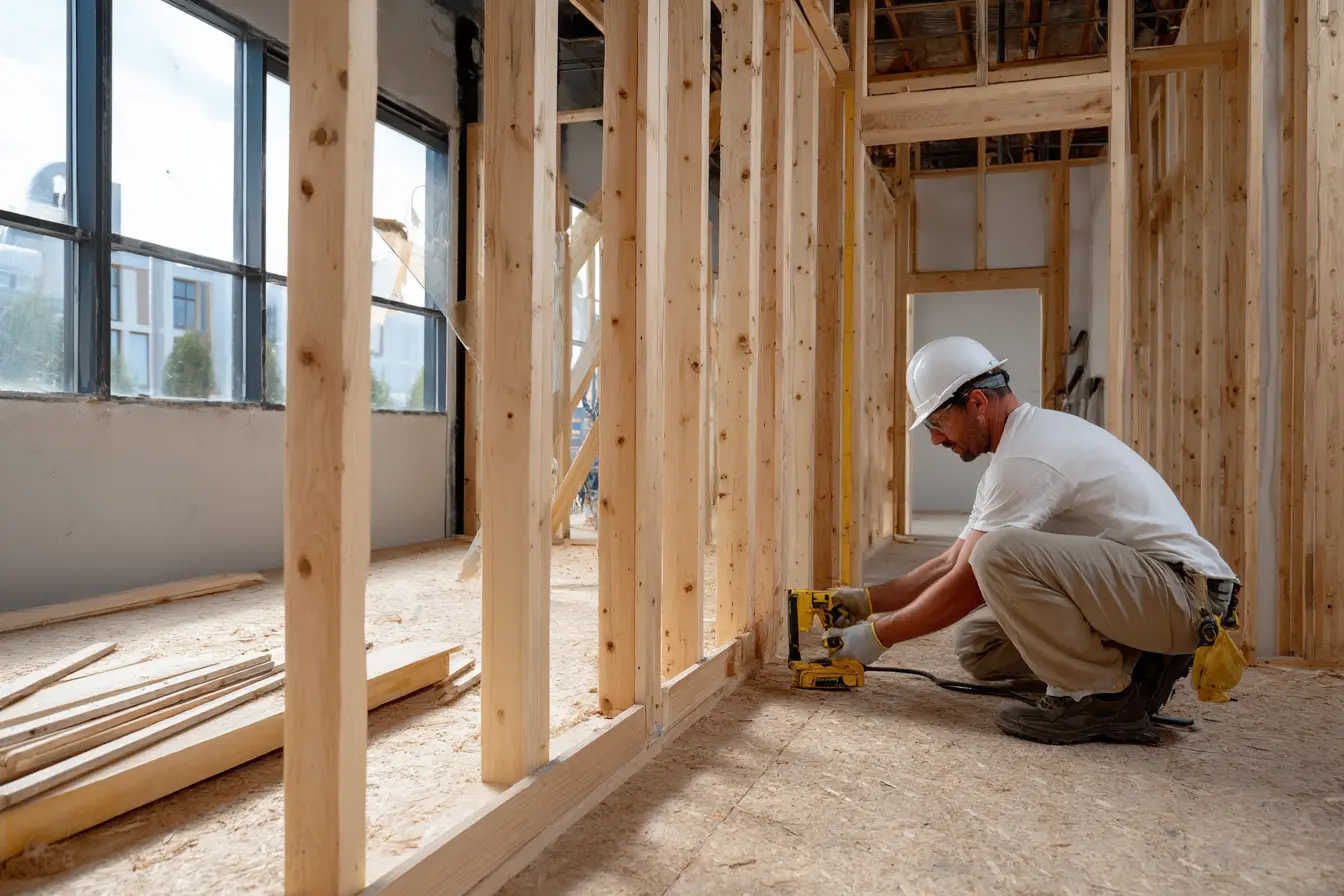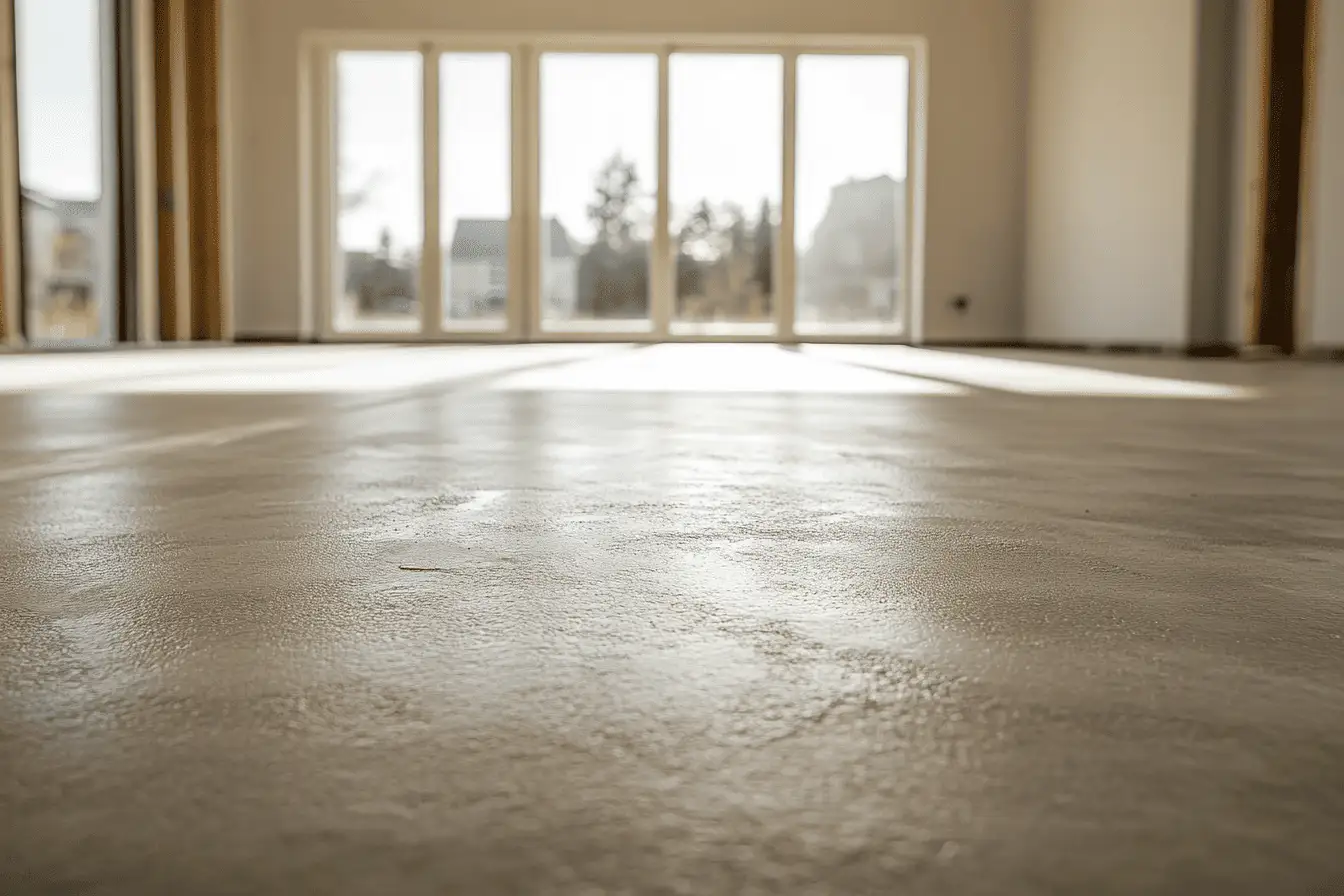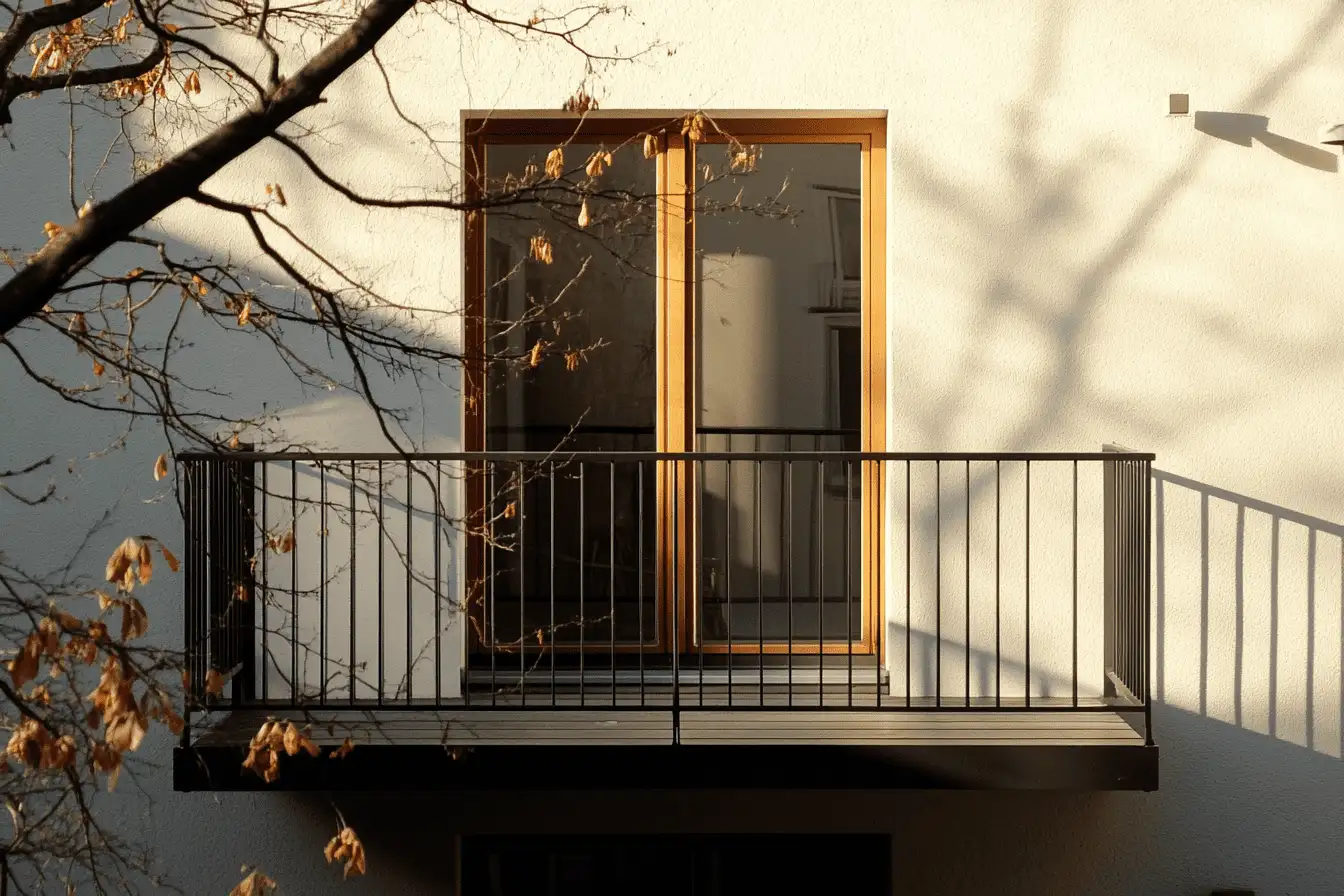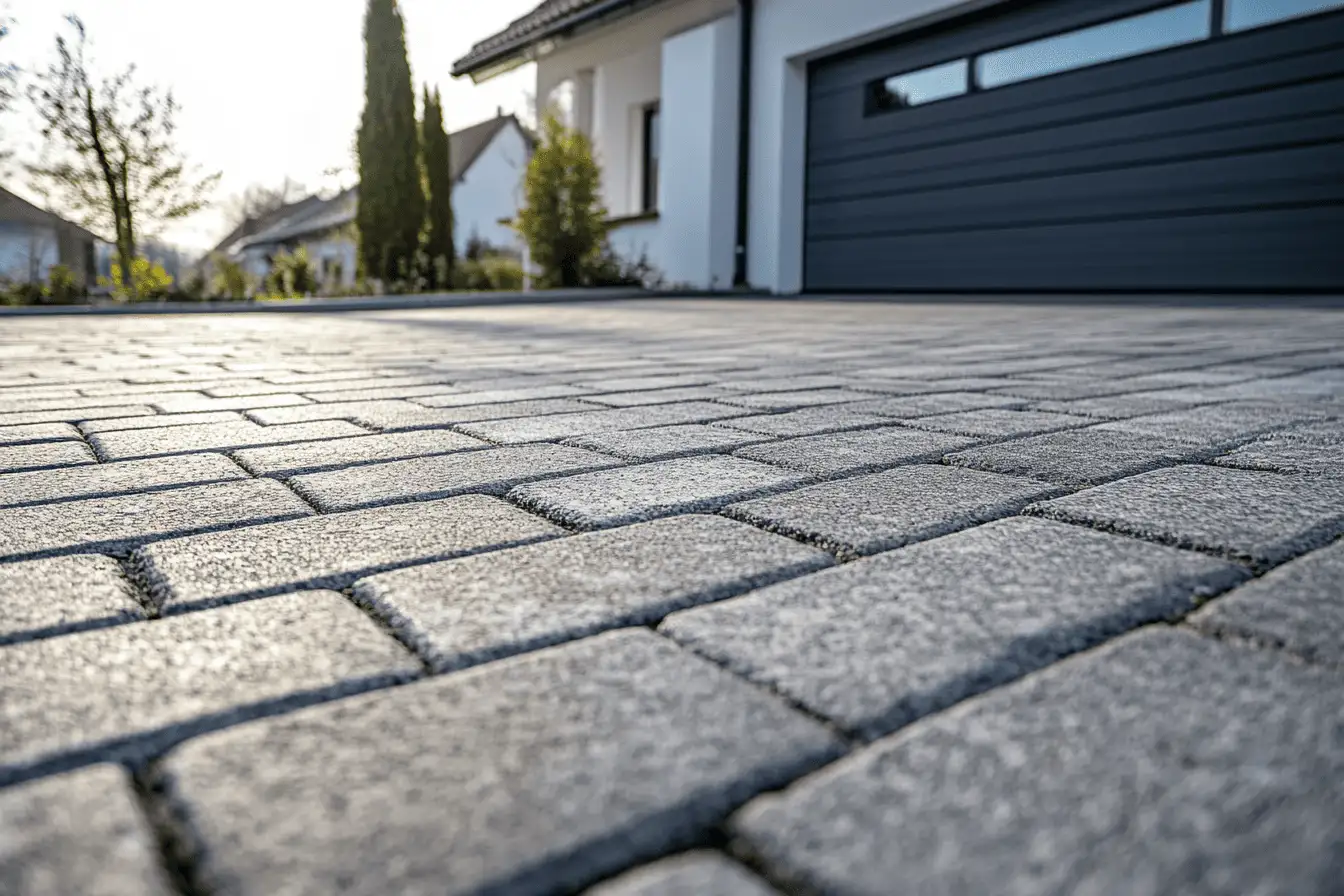
Do you want to install an additional door or window in your home? Do you want to connect two rooms to create more living space? A wall removal is the solution. Find out how much the average load bearing wall removal cost per square metre in the UK is. Also: an overview of the costs for non-load bearing walls and the best tips for saving money.
What is the average load bearing wall removal cost in the UK?
The average cost of removing a load bearing wall is around £1,500 – £3,800 per sqm in the UK. For load bearing walls, prices are driven up mainly by the cost of the structural engineer (around £500 – £2,000).
ON AVERAGE: £1,500 – £3,800 PER SQM
The exact cost to knock down a wall depends on various factors, first and foremost on whether the wall is load-bearing or non-load-bearing. It is therefore essential to clarify before wall removal whether the wall is load-bearing or non-load-bearing. This requires a structural analysis and calculations. The cost of removing a wall is determined, among other things, by the size of the opening, which is measured in square metres.
The average cost of removing a non load bearing walls is significantly lower at around £700 – £1,500 per sqm as the work is less demanding. Preparing the work, such as covering the space and debris removal, also has a combined cost of around £250 – £550 per sqm. Below are two cost examples for removing a 5 sqm load bearing wall and non load bearing wall near London. The figures listed are estimates only including VAT and may of course vary.
Example A: Load bearing wall removal cost – 5 m2
1 m2 | 5 m2 | |
|---|---|---|
Wall removal | £800 | £4,000 |
Small materials (foil, adhesive tape, silicone) | – | £150 |
Mounting steel beam | £300 | £1,500 |
Debris disposal | £400 | £2,000 |
Structural engineer report | – | £1,500 |
Total cost | £9,150 |
Example B: Non load bearing wall removal cost – 5 m2
1 m2 | 5 m2 | |
|---|---|---|
Wall removal | £400 | £2,000 |
Small materials (foil, adhesive tape, silicone) | – | £150 |
Debris disposal | £300 | £1,500 |
Structural engineer report | – | £550 |
Total cost | £4,200 |
Important: You should always have a wall opening carried out by professional tradesmen, because there may be pipes and cables in the walls that you may not have been aware of.
Save money: Compare wall removal prices in your area!
There are now platforms that help you compare prices of contractors and find the best value for money in your area quickly and easily. A recommendable service is that of Bark. It only takes a few clicks to fill out the form. Whether you accept one of the offers or leave it at the price overview is up to you. The service is non-binding and free of charge.
Which factors influence the load bearing wall removal cost?
In addition to the specific conditions of the house, room and wall, there are a number of factors that influence the costs:
- What is the general price level of the craftsman's company?
- How big and how thick is the wall?
- How high are the costs for the structural engineer?
- How high are the costs for installing the steel beam?
- How high are the costs for the preparation and the room (e.g. clearing, covering)?
- Are there any costs for additional work?
- What are the costs for disposing of the construction waste?
- Do the tradesmen charge for travel?
Cost to knock down load bearing wall: material- and labour costs
The cost of removing a load bearing wall consists of the cost of materials (about £400 – £600), the statistician’s report (about £500 – £2,000) and the labour time for the actual wall removal, which usually includes the cost of disposing of the rubble. These costs can vary from case to case and basically depend on whether the wall is load-bearing or non-load-bearing..
Material costs for the removal of lead bearing walls
The material costs for the removal of a load bearing wall also consist of the costs for the tool and the required materials.
→ Steel beam, £300 – £600 per sqm
If load-bearing walls are removed, additional safety precautions are required: the load of the ceiling must be supported by steel beams to guarantee that the building remains stable. The installation of steel beams costs between £100 – £350.
→ Small materials, £100 – £200
Additional costs are incurred for the necessary materials such as adhesive tape and silicone, a foil wall to separate the rooms and thick pads to protect sensitive flooring, which are priced between £100 – £200.
Labour costs for the removal of leading bearing walls
If there are additional costs and, if necessary, preparatory work, these are usually not included in the costs for the wall removal, which are calculated per square metre.
→ Structural engineer costs for report, £500 – £2,000
A structural engineer’s report is highly recommended. He will take a closer look at the building and, with the help of the building plan, will be able to see whether the wall to be renovated is load- bearing or non-load-bearing and calculate the concrete lintel.
A structural engineer will also indicate exactly where the opening can be made and how. If it is not a simple sheetrock wall, an assessment based on the building plan alone is not sufficient. The risk of the building collapsing is too high.
The structural engineer also assesses how the walls and ceilings can be optimally protected during the renovation work. How much a structural engineer costs depends on how extensive the assessment work and calculations are. The structural engineer’s costs for non-load-bearing walls are at least £250 – £550 lower than those for load-bearing walls, which range from £500 – £2,000 per m2.
→ Work of the tradesmen, £400 – £900 per sqm
The cost of the workmen for a wall removal is calculated per square metre and ranges from £400 – £900 for load-bearing walls and £150 – £350 for non-load-bearing walls per square metre of cut area. Wall removals are usually carried out using masonry saws, which allow precise cuts to be made.
Possible additional costs
→ Plastering and cladding the walls, installing electrical wiring, plus £20 – £100 per sqm
If the opening needs to be plastered and clad and electrical wiring installed, there may be an additional labour cost of between £20 – £100 per sqm.
→ Disposal of rubble, plus £200 – £500 per sqm
There is also a cost associated with the disposal of rubble generated during the renovation. This is either included in the service provided by the contractor, or varies between £200 – £500 per sqm depending on the volume and weight of the debris.
Note: The removal of a load bearing wall is not possible in all cases. In some cases, the static risk may be too great, especially in the case of large breakthroughs or the removal of a complete wall. The structural engineer can tell you whether your wall can be removed.
Cost to cut and create an opening in a wall for windows and doors
If it turns out that there is a lack of natural light in your own four walls and it is simply too dark, this can be changed by subsequently installing a window. Windows are usually part of a load- bearing wall.
The cost to put an opening in a structural wall for a window is calculated from the costs for the structural engineer and the actual wall removal, which is calculated from the cut area in square metres. How large the cut area is can be calculated by multiplying the height and width of the window. On average, a window is about 1.5 metres high and 2 metres wide, resulting in 3 m2.
The cost of opening a wall for a door is very similar or sometimes even slightly lower if the door is only 90 cm wide. At 0.9 m wide and 2 m high, the door would be 1.80 m2. Also, creating an opening in a wall for a door is more common in non-bearing walls. The following is an example of the cost of making an opening in a wall for a window. At a cost of around £700 per m2 for wall removal, the calculation is as follows:
Example: Creating an opening in a wall for a window – 3 m2
Wall opening, 3 qm | £2,100 |
Lintel beam | £800 |
Small materials (foil, adhesive tape, silicone) | £120 |
Debris disposal | £600 |
Structural engineer report | £400 |
Total cost | £4,020 |
How long does it take for the removal of a load bearing wall?
The exact amount of time is difficult to generalise, as accessibility plays a role in addition to the size and thickness of the wall. In most cases, however, it should not take longer than 2 – 4 days to remove a load bearing wall, including debris removal.
3 Tips for your wall removal
1) To avoid inconvenience and unnecessary costs, you as a tenant should first ask your landlord whether the removal of a wall is possible at all.
2) If it is a load-bearing wall, a structural assessment is unavoidable. The reason for this is that load- bearing walls in buildings always lie on top of each other, and if a wall no longer fulfils its static function, this is at the expense of the stability of the entire building.
3) Protect the entire dwelling from building dust. Even if the room in which the wall is removed is usually well protected with the help of foil, the doors should be closed in the entire flat and ideally the door floor slots should be sealed, as the fine building dust can otherwise spread easily and is annoying to remove.
How to safe on your load bearing wall removal cost
1) Ask for a lump sum offer
Many contractors offer package deals that include the services of a structural engineer and are less expensive than hiring an outside structural engineer.
2) Carry out a free price comparison beforehand
Internal wall removal prices vary not only between load-bearing and non-load-bearing walls, but also from company to company and the region in which you live. It is therefore always worthwhile to carry out a free price comparison in advance to check the price level in your region and to find the craftsman with the best price-performance ratio. You can also compare customer reviews at the same time.




















